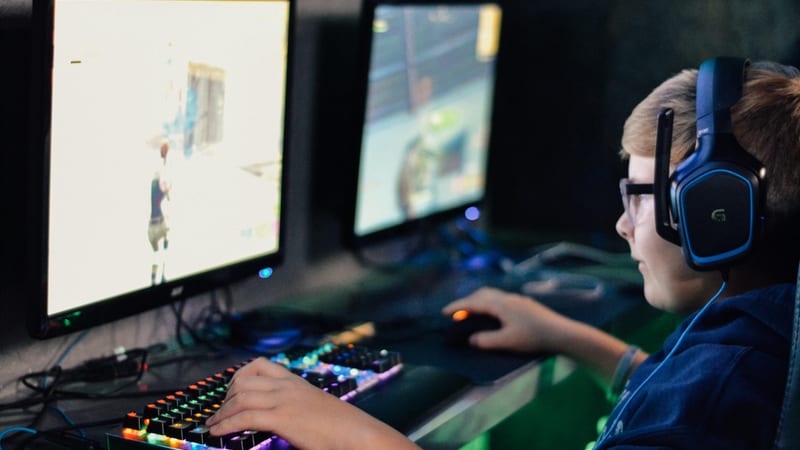We explore how weak cybersecurity and slow responses can trigger major data breaches and resulting ICO fines.
Read moreThe dangers of online gaming:
Trolls and overly competitive teammates are the mere cornerstones of the perils virtual gaming presents – the internet can be a treacherous landscape for anyone to navigate least of all children.
This has become compounded in recent years with games that were traditionally targeted at adult markets now being fully accessible to children, at least in part by being playable on mobile devices. The financial implications of online features such as loot boxes (described as being psychologically akin to gambling) are becoming increasingly problematic. The growing interactivity between users online, accelerated in large part by the proliferation of social media platforms like Instagram, Facebook and Twitter, is making internet users increasingly susceptible to manipulation and ever more subtle advertising. The Advertising Standards Authority (‘ASA’) is becoming increasingly aware of this and has taken a strong stance on marketing communications being “obviously identifiable” on social media. As if the risks of the virtual world weren't already clear enough, in April 2020 the ASA issued a reminder to the gambling industry highlighting the illegality of its attempts to advertise gambling to minors and those rendered vulnerable by COVID-19.
While the average adult might be savvy to these risks, the same cannot always be said for minors, who increasingly spend more of their formative years growing up on the internet. This applies to those at the professional end of the spectrum; many professional players start playing to a high competitive standard from very young ages. It also applies to the millions of young people who now have unprecedented access to gaming and the internet through mobile phones.
Safeguarding those at risk:
The critical need for the safeguarding of minors has been an important issue for both traditional and esports regulatory bodies alike in recent years. Esports organisations such as the Esports Integrity Commission (‘ESIC’), one of the most sophisticated bodies in the industry, have attempted to take a lead on child protection matters in esports. UNICEF have also committed a great deal of resources to understanding the issues unique to young people on the internet and providing recommendations to organisations operating in this space. Despite this awareness, safeguarding in esports is far less advanced than in more established industries, both on a national and international level. In August 2019, ESIC published introductory guidance on the Importance of Child Protection in esports (the “Guidance”). The Guidance emphasises the emotional, physical, financial and sexual consequences of the inadequate approach to safeguarding which esports organisations are currently taking.
The Guidance flags a number of key areas which pose "a foreseeable risk of harm to children." This covers a diverse spectrum from the direct and unsupervised access coaches have to minors, to unsupervised communication platforms, and the relaxed stance many esports organisations are taking to the age restriction of games.
The Guidance also provides a list of recommended steps which can be taken to safeguard against those risks which includes but is not limited to:
- the supervision of children while they practice, compete and otherwise work in the esports industry;
- encouraging esports organisations to adopt monitoring/supervision procedures into their relevant terms of use and privacy policies;
- the publishing of safeguarding policies and procedures in addition to codes of conduct which set out the expected behaviours coaches and/or other people dealing with minors must adhere to;
- organisations to introduce rules and regulations regarding participation with and access to children, giving organisations set procedures to follow in the event of safeguarding violations;
- the creation of whistleblowing and reporting policies and procedures; and
- a process to undertake investigations into any reported incidents and/or concerns.
Child protection laws:
In England there are laws in place to safeguard children from exploitation – these rules apply to minors participating in esports irrespective of whether that child believes that playing games constitutes work. For example, the Children and Young Persons Act 1933 imposes strict limitations on the employment of children of compulsory school age (i.e. 16 and under). These children are not allowed to work:
- before 07:00 or after 19:00;
- for more than one hour before school;
- for more than four hours without taking a break of at least one hour;
- for more than two hours on school days/Sundays and five hours (if 13-14 years old) or eight hours (if 15-16 year olds) on Saturdays (during term time); and
- in any work that may be harmful to their health, well-being or education.
Beyond employment restrictions, other English legislation exists to safeguard children. The Video Recordings Act 1984, in combination with the Pan European Game Information (‘PEGI’) rating system, prohibits the supply of age-restricted games to children. While there is significant debate as to the effectiveness of this legislation today, the point remains that this legislative framework exists to safeguard children – over time this framework will likely become more specific and targeted towards online-specific issues.
Conclusion:
While the safeguarding of children in esports is in its infancy, the UK's approach to safeguarding in the context of more traditional sports is far more established; this provides a useful template for the future. It is, therefore, foreseeable that esports may soon adopt similar processes such as implementing comprehensive safeguarding and whistleblowing policies, procedures and regulations; from mandatory DBS checks for coaches to a Designated Safeguarding Officer network. Due to the vast differences and inconsistencies within esports rules and regulations and the fact that it is a cross-jurisdictional sport, a lot of work will need to be undertaken to create an effective overarching set of regulations and develop an international governing body to oversee the global industry as a whole.
It is without doubt that technological advances have put computer games into the hands of more people including children and this is a trend which does not show any signs of slowing down. This has created new markets and opportunities for developers and esports organisations alike. These organisations have a responsibility to ensure that those who are consuming their products (either by playing or watching them be played) are safe to do so.
Our specialist esports team can provide advice and support, check out our esports page for more information.
Related insights
At the Future of Retail: Risk & Resilience Conference 2025, leading voices explored the challenges and opportunities shaping the sector.
Read moreWe explore the potential impact of AI on existing copyright laws and delve into the other IP and cross-border issues that arise from the use of global AI tools.
Read more


